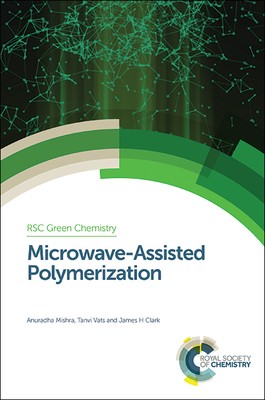
- We will send in 10–14 business days.
- Author: Anuradha Mishra
- Publisher: Royal Society of Chemistry
- Year: 2015
- Pages: 210
- ISBN-10: 1782623175
- ISBN-13: 9781782623175
- Format: 16 x 23.9 x 1.8 cm, hardcover
- Language: English
- SAVE -10% with code: EXTRA
Reviews
Description
Polymer science faces the challenge of meeting growing market demand for polymers whilst achieving sustainability through environmentally friendly processes. Microwave heating has emerged as an environmentally friendly technique that accelerates a variety of chemical reactions, including polymerization. This book provides comprehensive coverage of microwave-assisted polymerization. The first chapter introduces readers to the theory behind the accelerating effects of microwaves on chemical reactions and covers the types of commercial microwave reactors being used for synthesis and processing of polymers that are available on the market. Subsequent chapters are organised by type of reaction, including radical homo and co-polymerizations, step growth polymerization and peptide synthesis. Importantly, analysis of processes and product properties in comparison with conventional methods is also detailed. This book will be a valuable resource for green chemists and polymer scientists and engineers who want to develop sustainable processes.
EXTRA 10 % discount with code: EXTRA
The promotion ends in 17d.14:23:08
The discount code is valid when purchasing from 10 €. Discounts do not stack.
- Author: Anuradha Mishra
- Publisher: Royal Society of Chemistry
- Year: 2015
- Pages: 210
- ISBN-10: 1782623175
- ISBN-13: 9781782623175
- Format: 16 x 23.9 x 1.8 cm, hardcover
- Language: English English
Polymer science faces the challenge of meeting growing market demand for polymers whilst achieving sustainability through environmentally friendly processes. Microwave heating has emerged as an environmentally friendly technique that accelerates a variety of chemical reactions, including polymerization. This book provides comprehensive coverage of microwave-assisted polymerization. The first chapter introduces readers to the theory behind the accelerating effects of microwaves on chemical reactions and covers the types of commercial microwave reactors being used for synthesis and processing of polymers that are available on the market. Subsequent chapters are organised by type of reaction, including radical homo and co-polymerizations, step growth polymerization and peptide synthesis. Importantly, analysis of processes and product properties in comparison with conventional methods is also detailed. This book will be a valuable resource for green chemists and polymer scientists and engineers who want to develop sustainable processes.


Reviews